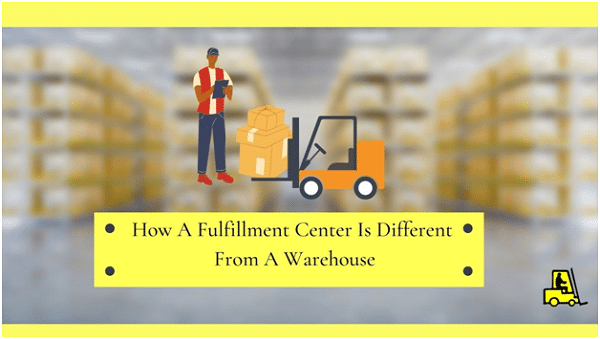Table of Contents
Although the terms warehouse and fulfillment center are frequently interchanged, they have very distinct meanings. Both are huge buildings that stock products for businesses that sell these products, but the services and use casesprovided are pretty different. Let’s take a closer look at each option so you can figure out which is the most satisfactory e-commerce shipping solution for you.
What is the purpose of a warehousing system?
warehouse management system relates to an organization that holds things for a long period. It is an extensive storage facility or industrial building used to store enormous quantities of products. Here, you can observe forklifts and containers, as well as shelves packed with massive quantities of products.
However, warehousing companies cater to companies that handle wholesale or B2B e-commerce orders on a large scale. Some major merchants will have their own warehouse(s) to keep extra products, while others rent warehouse space from other e-commerce companies.
What is a fulfillment center, and what are its advantages and disadvantages?
A fulfillmentcenter is a central hub for all logistics activities that are required to deliver a product from the vendor to the buyer. The right fulfillment company will help streamline operations to improve customer service. From order selection and processing to packaging and delivery, it controls the entire order fulfillment process. The fulfillment center is used by online merchants’ Third-Party Logistics (3PL) providers to accept, process, and fulfill client orders. A fulfillment center exists to expedite the delivery of online purchases to clients while relieving e-commerce businesses of the burden of handling this critical but difficult operation.
What are the differences between fulfillment centers and warehouses?
Let’s take a closer look at three significant differences between these two premises.
1. Storage for the long term against the short term
While a fulfillment center’s warehousing component (holding a merchant’s goods in designated locations) is important, the fulfillment center’s primary purpose is to turn inventory around fast.
If a product stays at a fulfillment center for more than a month, the merchant may be forced to pay hefty storage costs. Therefore, it is crucial to carefully select the products to send to the fulfillment center.
2. Operations
A fulfillment center is a considerably more sophisticated and busy business than a warehouse. In a fulfillment center, a 3PL offers a wide range of order fulfillment services, such as:
- Inventory is received.
- Picking products and generating choose lists.
- Putting together parts in kits and putting them together.
- Boxes for packaging.
- Shipment labelling.
- Orders are sent out.
- Returns management.
As far askeen warehouse operation is concerned, the major activity occurs when inventory is added or transferred out. So, there isn’t a lot of extra work required there.
3. Pickups Frequency by freight companies
Many different shipping companies make professional relationships with a fulfillment company because fulfillment centers process direct-to-consumer orders as soon as they receive them. Shipping carriers must pick up goods at least once each day. As a result, customers can expect their shipments to arrive on time. If you offer a same-day delivery courier service, a fulfillment center will the best bet for your goods due to their constant activity and availability.
Delivery carriers may be required to pick up client orders for any guaranteed same-day or next-day shipping option, as prioritized by the customer. Other carriers and services should regularly schedule order pickups for local and international.
So, in nutshell, fulfillment centers are prominently different from warehouses. They remain active all the time as compared to warehouses whose major job is to store the inventory only. Fulfillment centers are created to make the customer experience better by enhancing the process of ordering till delivery of the required products.
